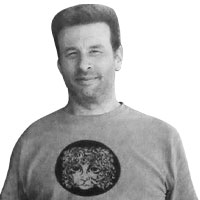Real-estate heir and accused murderer Robert Durst admitted—under oath—that he was the one who wrote the infamous “cadaver note” sent to the Beverly Hills Police Department after supposedly discovering the remains of Susan Berman, his friend and publicist, at her Beverly Hills home in December 2000.
In testimony on Monday in Los Angeles Superior Court, Durst, 78, said he arrived at Berman’s house with plans to drive up to San Francisco to check on a real estate project they were working on together. Durst claimed he saw a piece of paper attached to the front door that said, “Bobby, I am doing my walk, be back in an hour.”
He said Berman had given him a key to her place, and he used it to let himself in. But once inside, Durst claimed he found Berman lying dead on the floor, shot execution-style in the back of the head. He testified that he picked up the phone to call 911, but that the phone wasn’t working. So Durst said he drove to a payphone to notify police. Durst claimed he didn’t want to give his name, and considered using a fake one. However, he decided that his voice was too recognizable, so instead he decided to send the police a letter with Berman’s address above the handwritten word “CADAVER.”
Durst testified that he had pen and paper in his car, but no envelopes or stamps. He claimed not to remember where he bought those, nor where he later mailed the cadaver letter.
Durst had long denied writing the so-called cadaver note, saying he lied about it “for years” because, “I mean, I have difficulty believing it myself that I would write the letter and had not killed Susan Berman.”

Durst said he then drove to San Francisco, flew to New York, spent a bit of time in Ridgefield, Connecticut, and at the end of the month, headed to a friend’s house in Palm Beach for a New Year’s Eve party.
Durst’s storyline is the opposite of the one prosecutors have presented, saying that Durst was worried Berman, 55, was planning to cooperate with police and implicate him in his wife Kathie’s sudden 1982 disappearance after helping Durst with a false alibi. Kathie Durst’s body has never been found.
Defense attorney Dick DeGuerin spent a good portion of his direct examination of Durst Monday attempting to convince the jury that Durst had no good reason to have killed Berman.
“Susan had been murdered, someone must have had a reason, a motive, whatever, to kill Susan Berman,” Durst testified. “I had no reason to kill Susan Berman.”
“Did you have any motive to kill Susan Berman?” DeGuerin asked.
“No,” replied Durst.
DeGuerin continued questioning Durst about his relationship with Berman, and inquired about a $25,000 check he wrote to Berman in March 1999.
“Was she blackmailing you?” DeGuerin asked Durst.
“No.”
“Did Susan ever threaten to blackmail you?” DeGuerin said.
“No,” said Durst, explaining that the check “might have been for a car, her car had been falling apart.”
“Had Susan told you that the police might be talking to her, [that] she might be talking to the police?” he continued.
“Yes.”
The “ultimate question is,” said DeGuerin, “was Susan trying to blackmail you for anything?”
“Never,” Durst testified.
Durst, who at one point during his testimony on Monday sipped water from a Star Wars-branded bottle, said he also invested money in a Broadway musical Berman was trying to get off the ground. The budget was $5 million, Durst said, and Berman's boyfriend, Paul Kaufman, asked Durst for $500,000. Durst claimed he thought this was a ridiculous request, and agreed to invest $25,000. Durst said he didn’t think he would ever see the money again.
After allegedly killing Berman, Durst went on the lam and lived as a fugitive in Galveston, Texas. While hiding out, Durst in 2001 killed a neighbor, 71-year-old Morris Black, but was acquitted by a jury who believed Durst’s claim he shot Black in self-defense. Prosecutors alleged that Durst killed Black after Black realized Durst—who had been living as a woman to avoid being identified—was a criminal suspect.
Before Durst’s trial was postponed in July 2020 due to COVID-19, prosecutors showed the jury a video of a 2015 interview in which Durst described in detail how he dismembered Black’s corpse: “I’ve been told, um, that a surgeon would cut up a body the same way you do a chicken. You go into the joint. And you, you cut around the joint. You get rid of all the ligaments. And then, the thing comes out. You’re not gonna try to cut through the goddamned bone.”
In previous testimony, Durst said he was “very scared” when then-Westchester County, New York District Attorney Jeanine Pirro announced in October 2000 that she planned to reopen her investigation into Kathie’s disappearance. Durst on Monday said that while hiding out in Galveston and trying to avoid Pirro, he heard “the wonderful news that her husband was going to federal prison for tax evasion.”






